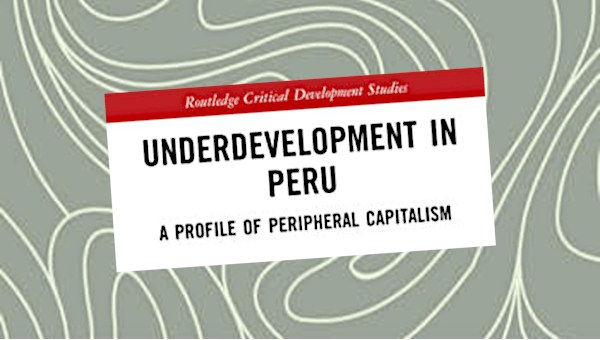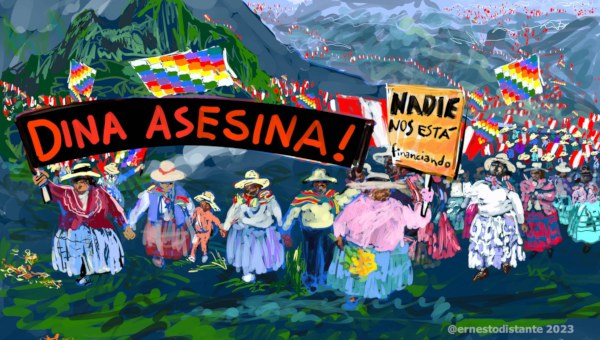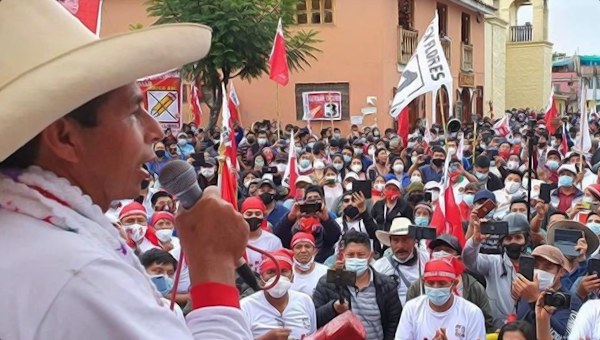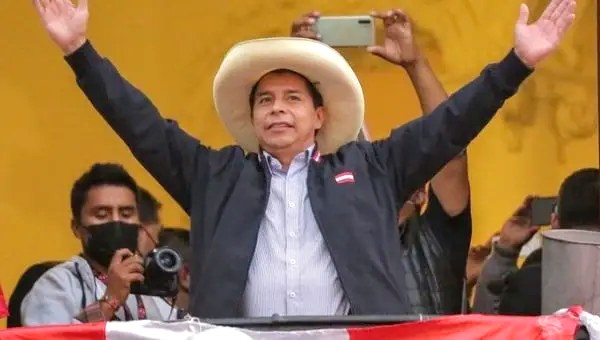The Class Character of the Expansion of COVID-19: The Case of Peru’s Capital City Lima
At the end of December 2019, the world was notified about the existence of a new coronavirus in the city of Wuhan in China. This virus, SARS-COV-2 (COVID-19), rapidly spread and was declared a pandemic by the World Health Organization (WHO) on 11 March 2020. In response, Peru was the first country in Latin America to implement a nation-wide lockdown and strict quarantine measures. These measures were implemented through a declaration of a state of emergency, with the military and the police charged with controlling the population.
This early response has not prevented the expansion of COVID-19 in the country. Currently (24 February 2021), Peru is ranked nineteen on the world ranking of the number of individuals infected by the virus.
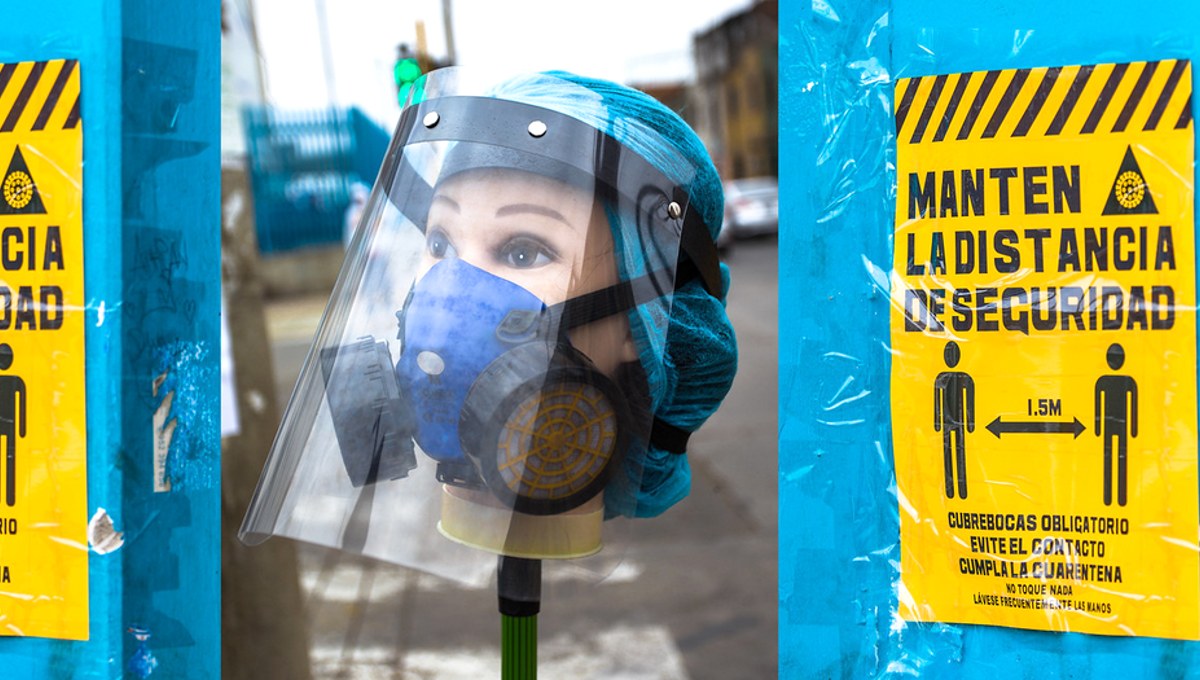
The expansion of COVID-19 in Peru during the total and semi-lockdowns and now in times of the almost completely re-opened economy appears to demonstrate the class character of the virus. Although the economic, social, and health effects of COVID-19 might be diminished through concentrated efforts by the state apparatuses, the most affected are the salaried and non-salaried working class, formal and informal situations, and self-employed workers.
We argue that the expansion of COVID-19 in Peru has a socioeconomic and class background. While it seems that the virus was brought into the country by travelers belonging to what might be called the accommodated social classes, it rapidly turned into a disease of the labouring classes. First of all, these classes did not have the option to stay at home during the lockdown as was mandated by law. Second, as the large majority of these social classes perform manual labour, they are not, in general, able to do this work at home and, hence, they are more likely to be exposed to the virus. Third, the conditions for the expansion of the virus might have been eliminated if the government had decided to actively intervene in the economy instead of providing late and uneven financial alleviation and repressing the population who have no way to search for a job, income, and nutrition other than by leaving their homes.
The Peruvian State and COVID-19
Since the 1990s, Peru has been ruled by neoliberal governments. All these regimes considered the market as the principal mechanism to distribute the wealth produced in the country. The neoliberal constitution of 1993 radically reduced the role of the Peruvian State in productive activities and increasingly sold the social functions of the State to the private sector. Hence, the only relief strategy the government implemented for the most affected population was that of short-term financial assistance. In May and June 2020, the poor, the extremely poor, and the self-employed workers, numbering around 7 million families (Vergara, 2020), received a subsidy of around $210 (US). In August, again, a subsidy of $210 (US) was handed out to what are considered the most vulnerable families. However, this amount was not enough to finance the monthly basket of basic foodstuffs for a family of four. In 2019, pre-COVID, the poverty line stood at around $390 (US) per month. Thus, the subsidy of $210 (US) is actually closer to that of being in extreme poverty, as the extreme poverty line for a family of four is set at $207 (US) per month.
The ideology of non-intervention in the markets, one of the principal neoliberal prescriptions that was introduced in the 1990s, can be considered the main reason for the price increases of medical oxygen and medicines for individuals infected by COVID-19. These policy settings are also considered responsible for the lack of medical oxygen, the scarcity of relatively cheap medicines in public pharmacies, and the oligopolistic market structure of the pharmaceutical industry.1 In Peru, many people have died because of a scarcity of medical oxygen or an insufficient income to pay for the dramatic price increases of medical oxygen.2
This neoliberal concept of how the world should work is triggering new health problems now that Peru is ‘operating’ again. These have principally to do with the previous lack of regulation and enforcement of public transport, which has led to an intense competition between private transport companies. Prices are also too low to properly finance the transport of citizens at current international safety standards for public transport. It is to be expected that these companies will not abide by these standards, and the Peruvian citizens will not complain, fearing increasing prices in these times of economic recession.
The reduced role of the State in the economy and the preference for market-based solutions to social problems or a healthcare system of which one part is based on the market mechanism (private healthcare), and another part is public (with differentiated units for salaried workers and informal workers), is, in the main, responsible for the collapse of public healthcare. The permanent shortage of intensive care units and hospital beds in public hospitals results in many individuals who are infected by the virus being attended in wheelchairs outside the hospital buildings, in tents in the hospital’s parking lots or not at all, or and remaining at home connected to large oxygen cylinders. In this context, it is interesting to observe that when we compare Peru with Uruguay at the beginning of October 2020, Uruguay, which has had only 50 deaths related or caused by COVID-19 and a total of 2,268 COVID-19 infections, spent 9% of its GDP on healthcare (Vergara 2020, 7-8).3
The Structural Conditions for the Expansion of COVID-19 in Peru
The expansion of COVID-19 was to be expected, as the country’s principal role in the international division of labour and the neoliberal extractivist development model, in place since the beginning of the 1990s, creates a superfluous labour force. This is shown by the very small part of the Economic Active Population (EAP), around 30% to 35%, required to operate the country (Lust 2020, 7).
In 2018, around 70% of the EAP was not necessary to ‘run’ the economic-development model based on the export of the country’s commodities and the investments in the extractive sectors, principally the mining sector. The sectors and branches that are directly and indirectly needed to comply with Peru’s function in the globalized capitalist world, such as mining, transport, communication, finance, manufacturing, water, gas, electricity, private and social community services, and the state sector (excluding public education), provide employment to about 30% of the EAP (Lust 2020, 7).
The complete standstill of the Peruvian economy during the lockdown heavily affected workers who are employed in very small businesses or who are self-employed. Data shows that, in 2018, about 72.4% of the EAP worked in micro companies, defined as corporations that employ between one and ten individuals (INEI 2019, 55).
Informal workers are generally employed in companies that employ between one and five individuals or are self-employed (Maloney and Saavedra-Chanduvi 2007, 29-30, 39; ILO 2012, np; Salazar-Xirinachs and Chacaltana 2018, 18, 20, 21). In these businesses, principally, manual or low-skilled labour is performed. This type of labour can only be physically executed at the workplace. Hence, the lockdown urged the mass of the Peruvian workers to look for other sources of income, and thus, in ‘breaking’ the lockdown, they may have contributed to the expansion of COVID-19 in Peru.
Without the lockdown, the Peruvian economy would also have been hit hard by the outbreak and worldwide expansion of COVID-19, not only through the reduction of the export of mining products, due to diminishing demand in the Global North and the reduction of the commodity prices, but also, through its insertion into the globalized value chains organized by transnational capital. The mass of micro businesses are incorporated in a globalized productive process.
The worldwide reduction of productive activities and the drastic restrictions on international transport have dealt an significant blow to the global value chains. Complete supply chains came abruptly to a halt as the chain was cut. For this reason, it can be argued that through their insertion into globalized productive processes, the Peruvian workers in micro business or the self-employed workers might have contributed to the expansion of COVID-19, as the situation obliged them to ‘trespass’ the regulations regarding social distancing when the global value chains broke down.
The lockdown caused the doors to close of micro companies, medium-sized enterprises, and big corporations. Massive layoffs are currently allowed by the government. At mid-August 2020, the unemployment rate in Metropolitan Lima reached 16.4%, a more than 100% increase from March 16 (INEI 2020, 1). However, not only did unemployment increase, the labour force participation rate also dropped. Moreover, the government did not account for the health consequences that an increase of informality and unemployment might have on the population.
The workers who were fired due to the pandemic were formal and informal workers. Formal workers have access to unemployment benefits. However, as these benefits are individualized and based on one’s salary, in general, these benefits are not sufficient to maintain one unemployed for more than three months. The search for jobs, income, and food by the informal and recently fired working classes has driven them into positions that expose them to contracting COVID-19.
The reopening of the economy has principally involved the restart of the activities of large companies. Of course, since July 2020, not only large but also small and medium-sized companies have restarted their businesses, as well. However, in the case of micro businesses, the decision whether to make a restart of activities is a very difficult question. As most of these companies are of precarious nature, lots of them have closed down permanently. Furthermore, the sanatory regulations to which companies have to abide before they can reopen are very difficult for these companies to finance.
The economic problems of micro enterprises can be clearly illustrated when we analyze the data of companies that have received loans against a very low average interest rate of 1.69% in the context of the reactivation of the economy. Although the majority of these companies were micro or small businesses, it is but a very small part of the total number of such companies in Peru. Data from the Peruvian Central Bank for October 2020 show that only 471,642 of all small and micro businesses received a loan, i.e., 19.9%, according to the total number of these companies in 2019.
The last structural condition that can explain the expansion of COVID-19 is the question of temporary contracts or the absence of any contract at all. In fact, around 90% of the workers in small companies have no contract. The absolute majority of workers in the private sector have a temporary contract (Cuadros Luque 2017, 55). Hence, as companies had to close their doors, these contracts came to an end without any possibility to proceed with a legal claim regarding the loss of income nor to demand compensation. This obliged these workers to use not only their unemployment benefits to survive, but also, parts of their personalized retirement funds. When their savings ran out, they began to look for work, resulting in more people interacting, thus, an expansion of the virus.
Informality and COVID-19
Informality or the ‘expulsion’ to the informal sector of previously formally employed individuals has worked as a catalyst for the expansion of COVID-19. Data for Metropolitan Lima districts show a positive relationship between the rate of informality and the rate of COVID-19 infections.
The rate of informality at district levels includes the percentage of individuals that labour in companies employing between one and five workers and the percentage of self-employed workers. In cases where the rate of individuals working in companies that employ one to five individuals is higher than the average rate in Metropolitan Lima (55.5%), the rate of informality is considered to be high. The same analytical determination applies to the rate of self-employed workers. The average rate of self-employed workers at the level of Metropolitan Lima is 32.4%. Although it is only necessary that one of the two variables be higher than the average in order to be counted as a district with high informality, in general, a higher than average rate of y small business employees is ‘accompanied’ by a more than average rate of self-employed individuals.
Data show that 47.02% of the population of Metropolitan Lima live in districts for which a direct relation can be established between the rate of informality and the rate of COVID-19 infections. Around 6.7% of the population reside in districts that are characterized by a low rate of informality and a high rate of COVID-19 infections. This result can principally be attributed to the specific social and geographical character of these districts.
The number of individuals that live in districts that combine a high rate of informality and a low rate of COVID-19 infections is very large. The total number of individuals who live in these 13 districts with high informality and low rates of COVID-19 infections, and persons that live in districts with a low rate of informality and a high rate of COVID-19 infections, excluding the districts with a specific character, is 4,274,649, i.e., 44.6% of the total population of Metropolitan Lima.
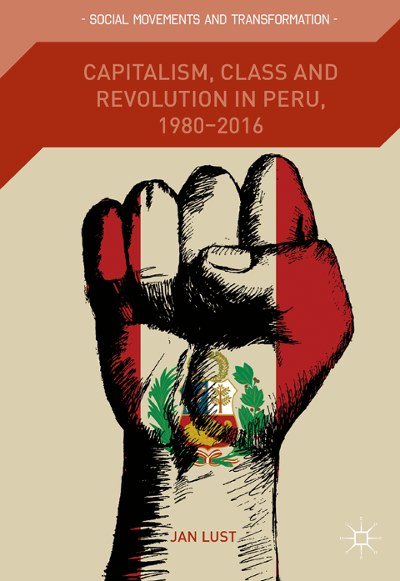
Our analysis does not seem to clearly confirm that an overall positive relation exists in Metropolitan Lima between the rate of informality and the rate of COVID-19 infections. Only about 47.02% of the total population of Metropolitan Lima live in districts for which this particular relation exists. The principal reason for this result is the fact that there are remarkable size differences between the Metropolitan Lima districts. The smallest district has a COVID-19 infection rate of 7.1% and the largest district, an infection rate of 2.7%. This last (working-class) district has also the highest number of COVID-19 infections. It is the large number of individuals that live in this kind of working-class districts that cause the rate of COVID-19 infections to be relatively low.
When the effect of the size differences on the relation between the rate of informality and the rate of COVID-19 infections for Metropolitan Lima is reduced, data show that a direct, clear, and positive relation exists between both variables. Around 52.1% of Metropolitan Lima individuals live in districts for which a positive relation exists between the rate of informality and the rate of COVID-19 infections.
The relation between the rate of informality and the rate of COVID-19 infections might be stronger when we take the uneven access to health services into consideration. It is to be expected that individuals working in the informal sector have difficulties in accessing these services due to financial barriers. As a consequence, the number of COVID-19 infections might be much higher than reported. Furthermore, the precarious financial and labour situation of informally employed individuals might not ‘allow’ them to report themselves sick due to a COVID-19 infection.
Conclusion
COVID-19 is not a democratic virus. Although every human being can be infected, some human beings have more chance to be infected than others. The Peruvian labouring classes in Metropolitan Lima seem to be easier to be infected by COVID-19 than the accommodating classes.
The lockdown and the state of emergency could not prevent the expansion of the virus. The function of Peru in the globalized capitalist world has called into existence a company structure (a strong majority of the Peruvian EAP are low-skilled and are employed in micro companies) and a level of informality that has functioned as a catalyst for the expansion of COVID-19. The general use of temporary contracts, which are the product of the neoliberal adjustment programs in the 1990s, enabled the companies to rapidly reduce personnel and labour costs but also forced their former workers to put their lives and that of others in danger by neglecting social distancing. For these workers, the choice has been simple: dying from hunger or from COVID-19.
Discussions over the future design of the social and economic structure of Peruvian society and the role of the State in society are more than urgent in light of the factors discussed above. The social and economic structure presently in place contributes to the expansion of COVID-19, a development model that through the elimination of the regulatory role of the State and the privatization of its social obligations has placed the country into a state of permanent social emergency. This structure has led to the incapacity of the government to develop and implement measures against the expansion of COVID-19. As such, it is crucial that these discussions should begin with a planning process to reform the current economic development model. •
References
- Cuadros Luque, Fernando. 2017. “Situación del mercado de trabajo y costos laborales en el Perú,” Cuaderno de Investigación no. 2: 34-82.
- ElDiario.es. 2020. “Perú espera reducir la escasez de oxígeno con 65 nuevas plantas,” ElDiario.es, August 22, 2020.
- ILO (International Labour Organization). 2012. “Statistical update on employment in the informal sector.”
- INEI. 2020. “Situación del mercado laboral en Lima Metropolitana.” Informe Técnico No. 8, August 2020.
- INEI. 2019. Perú: Evolución de indicadores de empleo e ingreso por departamento, 2007-2018. Lima: INEI.
- Lust, Jan. 2020. “Structural labor precariousness in Peru,” Critical Sociology. Epub ahead of print 2 July 2020. DOI.
- Maloney William F and Jaime Saavedra. 2007. The informal sector: What is it, why do we care, and how do we measure it? In Informality: Exit and exclusion, edited by Guillermo E. Perry, William F. Maloney, Omar S. Arias, Pablo Fajnzylber, Andrew D. Mason and Jaime Saavedra-Chanduvi, 21-41. Washington D.C.: The World Bank Group.
- Salazar-Xirinachs. José Manuel and Juan Chacaltana. 2018. La informalidad en América Latina y el Caribe: ¿Por qué persiste y cómo superarla? In Políticas de formalización em América Latina. Avances y desafíos, edited by José Manuel Salazar-Xirinachs and Juan Chacaltana, 13-47. Lima: OIT, Oficina Regional para América Latina y el Caribe, FORLAC.
- Vergara Alberto. 2020. “La crisis del COVID como Aleph peruano.”
Endnotes
- See also: “Perú: el negocio del oxígeno y la respuesta del gobierno,” (accessed 26 August 2020).
- In August 2020, the government took measures to increase the production of oxygen, in “Perú espera reducir la escasez de oxígeno con 65 nuevas plantas,” (accessed 26/08/2020). Just recently (end of January), oxygen production plants were starting to be implemented in some hospitals. The Peruvian State did not take measures to ensure the production of oxygen for the population that needs it for their families at home. It seems that it does not want to intervene in the market (sic).
- See also: “Coronavirus en Perú,” (accessed 11 January 2021).


